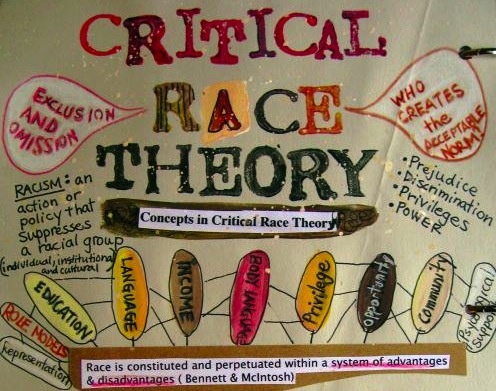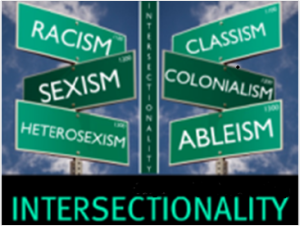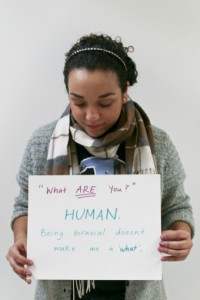Major Questions, Different Directions
As CRT has grown, it has faced criticism from within the movement and without. The external criticisms are worth mentioning briefly because in some ways, they reflect some of the internal criticism of the movement. Richard Delgado and Jean Stefancic address these criticisms in “Critiques and Responses to Criticism.” Delgado, Derrick Bell, and Mari Matsuda, who helped establish CRT, have been accused of privileging minority voices as experts at the expense of non-minorities who may have insights or expertise (“Critiques” 99-100). The movement has also been accused of “racial essentialism” and disregard for merit (102). The most crucial criticism, however, stems from those who denounce CRT’s narrative methodology as being too ambiguous and amorphous to meet acceptable standards of academic rigor (103). These, and other external criticisms have been addressed by Delgado and other members of the movement, but they have also served to turn a critical eye inward to a movement that must evolve and adapt to a changing world. Recent critique of CRT argues that the black/white binary upon which CRT was based in the years following Brown v. Board of Education are too exclusionary given the contemporary significance of multiculturalism, intersectionality, and other forms of racism in the 21st century. The major questions in the field hinge on the direction academics and CRT scholars want to go: Move away from narratives? Go beyond the black/white binary? Incorporate and adapt CRT concepts, theories, and methodologies to contemporary issues of race such as multiculturalism and microagressions? This entry will briefly address those issues.
Imani Perry, Professor, Center for African American Studies at Princeton University touches on narrative by asserting that storytelling alone is not sufficient to address racial inequity. Perry approaches narrative through cultural studies. In her article Cultural Studies Critical Race Theory and Some Reflections on Methods, she argues for examining the narrative created by “social practices and forms of consumption (television, church, film, games) (917)” and evaluating those cultural artifacts “as they relate to the structural power of law, and the underlying ideologies of constitutional and private law” (917). For example, rather than disdain the “low brow” appeal of pop culture such “paternity test shows” that create and reinforce stereotypes about race (917), Perry argues that such artifacts of cultural production should be read as a series of interdependent texts that communicate values that influence, and are influenced by, law (917).
Perry’s approach is just one of the ways adherents of CRT address the criticism of a storytelling methodology. She critiques culturally produced stereotypes and implicitly insists on counter-narratives to these stereotypes. Rather than rely on stories or narratives that may be “atypical” or “a distortion of public discourse” (Delgado and Stefancic 103), cultural studies creates a narrative through consistent and cumulative artifacts. This reflects an important aspect contemporary CRT in that it incorporates social media, new media, and digital technologies that were not part of the narrative framework during the early decades of CRT. There are many ways to approach CRT — whether through literary studies, American studies, legal rhetoric, etc. – and each discipline has adapted the narrative aspect of CRT to keep CRT relevant and dynamic.
Gloria Ladson-Billings and Tara J. Yasso address another current debate in CRT: the black/white binary. Ladson-Billings and Yasso disagree about whether the black/white binary is still essential to CRT. Ladson-Billings believes that the issue is not the binary, but how racial and ethnic identities are categorized according to their relation to Whiteness (116). Yasso, however, believes that in a multicultural society, we need to move beyond the binary to address issues of liberal colorblindness, multiculturalism, cultural capital, and appropriation (117).
In addition to the aforementioned areas of contention, CRT has yet to come up with a theory that adequately addresses contemporary concerns of intersectionality and globalization. These concerns include a wide variety of issues from the impact of class on housing segregation (“Critical Race Theory Today” 120), elite jobs (121), standardized
testing (121), environmental justice (121), and poverty (123), just to name a few. In contrast to these areas of concern that reflect Derrick Bell’s interest convergence theory and social justice, discourse analysts examine ideas such as identity, microaggression, race as a social construct function in the 21st century.
The major questions of CRT do not have clearly delineated trajectories or histories. They have fuzzy borders as individual scholars, sociology departments, law schools, history departments, etc. determine the application of theories and methods. Similar to Dr. Haitsma’s evaluation of the major questions in the field of Rhetoric and Composition, the questions in CRT are merely differences in application and not ideological or pedagogical debates that fracture the field and create the type of intradepartmental hostilities evident in Dr. Moberly’s articles on game studies.
I agree with Dr. Yasso’s contemporary insight into CRT. My own vision for addressing race and racism maintains the “old school” focus on social justice and combines it with the contemporary interest in how race and microaggressions shape racial and personal identity in law and literature. For example, I was recently discussing African American anger and stereotypes of the Angry Black Woman and the Dangerous Black Man. Both of these stereotypes are used in an attempt to derail discussion about the circumstances that lead to real, or perceived, anger. Often, it’s not even the overt racism that results in the frustration and anger (ironically, when non-people of color demonstrate anger, it’s often called righteous anger, passion, or even patriotism, depending on the circumstances), but the multitude of microaggressions over a day, a year, a lifetime that result in the harsh tone or outburst when someone touches your hair (this is not a zoo), states that you are articulate (unspoken: for a black person), asks “What are you?” (I’m a who, not a what), questions your credentials (do I need to pin my resume and recommendations to my chest?), or gives you a backhanded, racist compliment.
Overt racism can be addressed through legal channels or even social media which is implements its own form corrective castigation; microaggressions, however, are often unaddressed because they are typically subtle. Calling out microaggression can cause someone to be labeled as “too sensitive” or “playing the race card.” This perspective provides a fresh way of looking at African American lives and addressing it in literature. What are the microaggressions that influence the character’s responses? How do we see them shaping personal as well as cultural identity? How is the law complicit in creating and reinforcing microaggression? These are some of the contemporary CRT questions I intend to address in my research.
Works Cited
Delgado, Richard, and Jean Stefancic. “Critiques and Responses to Criticism.” Critical Race Theory: An Introduction. New York: New York UP, 2012. 99-111. Print.
—– “Critical Race Theory Today.” Critical Race Theory: An Introduction. New York: New York UP, 2012. 113-142. Print.
Ladson-Billings, Gloria. “The Evolving Role of Critical Race Theory in Educational Scholarship.” 8 Race Ethnicity and Education 1 (2005): 115-19. Web.
Perry, Imani. “Cultural Studies, Critical Race Theory and Some Reflection on Methods.” 50 Villanova Law Review 4 (2005): 915-24. Law and Society Commons. Web. 20 Sept. 2014.
Yosso, Tara J. “Whose Culture Has Capital? A Critical Race Theory Discussion of Community Cultural Wealth” (2005).




I find it interesting that cultural studies and rhetoric share such common questions. I’m interested in reading your next entry on OOS, because the idea that we need to study all sorts of cultural artifacts crops up in rhetoric, as well (though I won’t be writing about that one…too big). The idea of microaggressions seems huge to me; how do you ever begin cataloging the huge range of that? Seems like a massive undertaking.
Ok, let’s see if my response actually posts this time…
I can’t remember exactly what I said before, but my response is the same: the question of CRT is one that has come up in a recent project of mine, in which I consider Storm (from X-Men) cosplay, as both a performative act of identity (a la Butler) and as a text that suffers from the tyranny of projected meaning. In my research I found that minority cosplayers are primarily identified by race (for example, a white man as Superman is Superman, but an African American is Black Superman), and that mixed-raced interpretations (i.e. a person of color playing a white character) becomes sites for the unabashed expression of racism. One experience I found is that of a cosplayer named Chaka :http://www.xojane.com/issues/mad-back-cosplayer-chaka-cumberbatch
(Not to be ignored, I think, is the magazine’s labeling of her response as “mad black cosplayer,” which does not seem to be a title Chaka Cumberbatch uses herself.)
In my initial response I asked if you were familiar with texts on minstrel traditions and appropriation as suggested by Dr. Santo, but I’m away from my notes and can’t now mention them by name (although I’m happy to share later). Instead, I’ll ask if anything comes to mind that I might want to add to my research list, because I’m looking to further ground my own experience with an awareness of CRT as I move forward with my paper(s).
Hi Aubrey,
I have seen/read much of the kerfluffle around traditionally white characters played or portrayed by minorities (Thor, Spiderman, etc). I am definitely going to read the xojane article (I sooo want that site to be better than it is!) and look into minstrel traditions and appropriation. You have some interesting observations. I’ll need to familiarize myself with some of those areas.